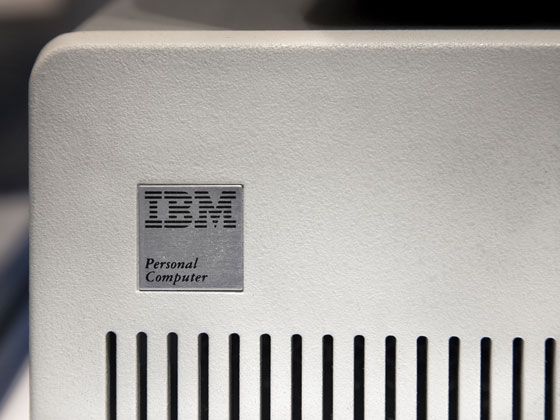
A "Customer-Driven" Research Project
Customer Driven Research > About Us
 The IBM Personal Computer
The IBM Personal Computer
In a late 1970s meeting, several of us staff members from the Computer Technology and Training (CTT) Division of Exxon's Communications and Computer Science (CCS) Department in Florham Park, New Jersey met with several of Exxon's IBM marketing reps to suggest:
- that IBM develop an Intel microprocessor-based computer with an open architecture (similar to S-100 bus-based computers);
- that the computer utilize software from vendors such as Microsoft (for language compilers and interpreters), Digital Research (for the CP/M operating system), and Software Arts (for Visicalc); and
- that the computer be made widely available through outlets such as Computerland and Sears Roebuck.
Although early microcomputer hardware and software was fairly primitive compared to that of mainframes and minicomputers, various groups and individuals in Exxon Corporation and its affiliates and subsidiaries were starting to acquire microcomputers and develop applications with them. Exxon's CTT Division, mandated with the task of establishing corporate hardware and software standards, was concerned about the proliferation of microcomputing products from multiple vendors — and the inevitable maintenance and support costs that would accrue.
We envisioned the day when every business person would have a computer on his or her desk with spreadsheet, word processing, business graphics, and mainframe communication software; for this to become a reality, the computer would need to (1) have an 80-column display and bit-mapped graphics, (2) be competitively priced, customizable, and expandable, and (3) be offered by a major computer manufacturer such as IBM so it could readily become a corporate standard and be attractive to software developers. Intel microprocessors, Digital Research's CP/M operating system, and Microsoft Basic were already established products in the emerging microcomputer industry. Larry Rothman was the lead IBMer in the late '70s meeting when we broached these issues with IBM.
In my recent correspondence with Larry, he noted that "internally IBM was quite skeptical of the efforts we undertook together". I replied that I could imagine the skepticism at (1) introducing "ASCII" into a company that had standardized on "EBCDIC", (2) introducing third-party CPUs and related electronics into a culture that was used to doing things in a proprietary manner, (3) farming out production to third parties with questionable reliability standards, (4) using operating system, compiler, and application software from garage shop/startup vendors, and (5) publishing hardware and bus specifications so third-party vendors could develop compatible products. He replied that I had correctly identified the issues of concern but that "the risk issue was mitigated in true IBM style by 'fencing' the 'problem' and considering it research ... and 'customer driven'."
Appendix
On August 12, 1981, IBM announced the IBM Personal Computer (PC), based on the Intel 8088 microprocessor. It utilized operating system and programming language software from Microsoft and Digital Research, as well as application software from Software Arts, Peachtree, and other software developers. It was available directly from IBM as well as from retailers such as Computerland and Sears Roebuck. Although the Sears Roebuck channel was not highly successful in terms of direct revenue, it helped to establish and broaden the IBM PC's appeal over the long term in the vast consumer marketplace.
End Notes
1. Prior to the IBM PC project, IBM had authored and carefully protected the operating system software for its computers. The IBM PC marked the beginning of a new era for IBM, in which the operating system software was produced by a 3rd party. IBM sought to regain the operating system initiative with the December, 1987 release of OS/2, which was jointly developed by IBM and Microsoft under the leadership of an IBM software designer. However, Microsoft had already released an early version of its Windows software in November, 1985, and OS/2 never gained sufficient traction in the IBM PC software developer and user communities.
2. The Exxon-Mycron joint venture was an outgrowth of Exxon's desire to drill for oil off the Norwegian coastline and the Norwegian government's desire to promote their budding high-tech firms along with commercial development in their far-northern city of Tromso. Mycron had developed an Intel 8086-based computer and was working with Digital Research to help develop CP/M-86 and MP/M-86, 16-bit versions of the single-user CP/M and multi-user MP/M operating systems, respectively.
Acknowledgements
I reached out to Larry Rothman and to Bob Paredi and Cliff Bernstein, two of my Exxon colleagues during the late 1970s and early 1980s, for their recollections and insights about this late 1970s meeting and its context. Their graciously-provided feedback is incorporated in this narrative.